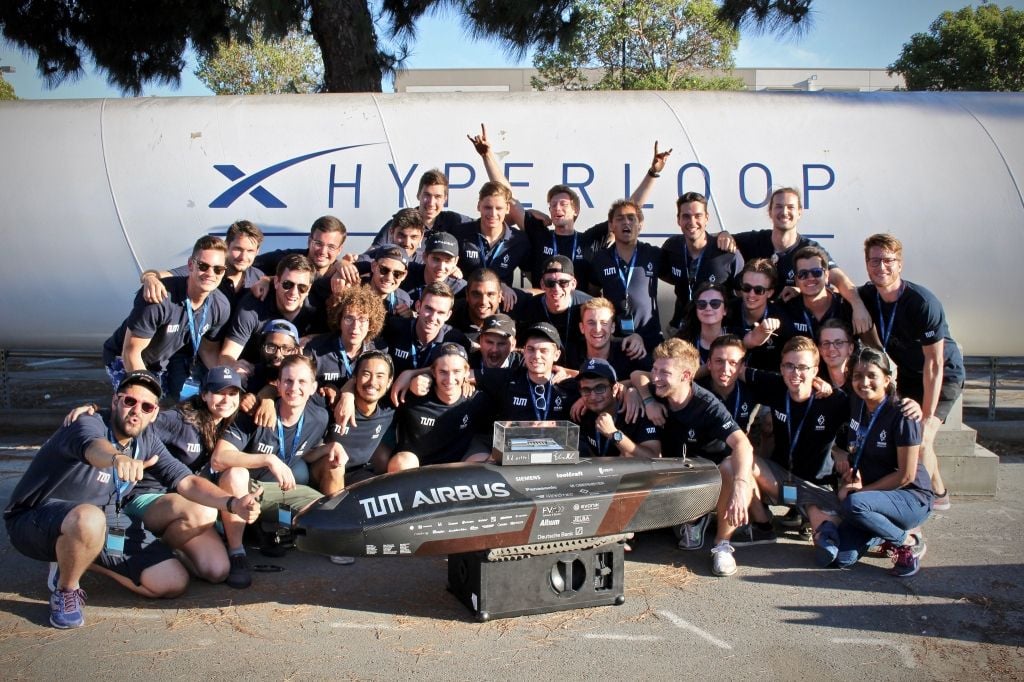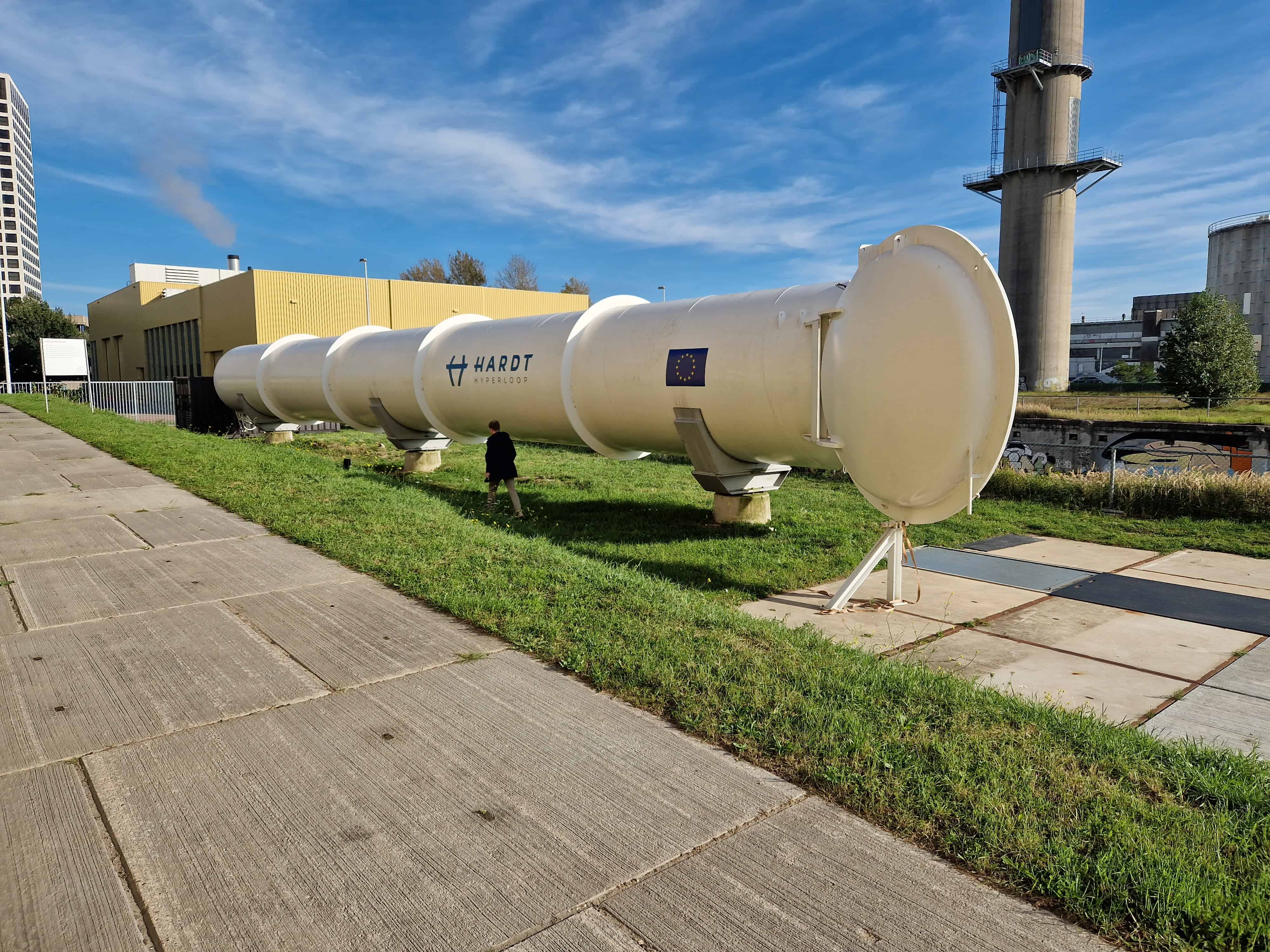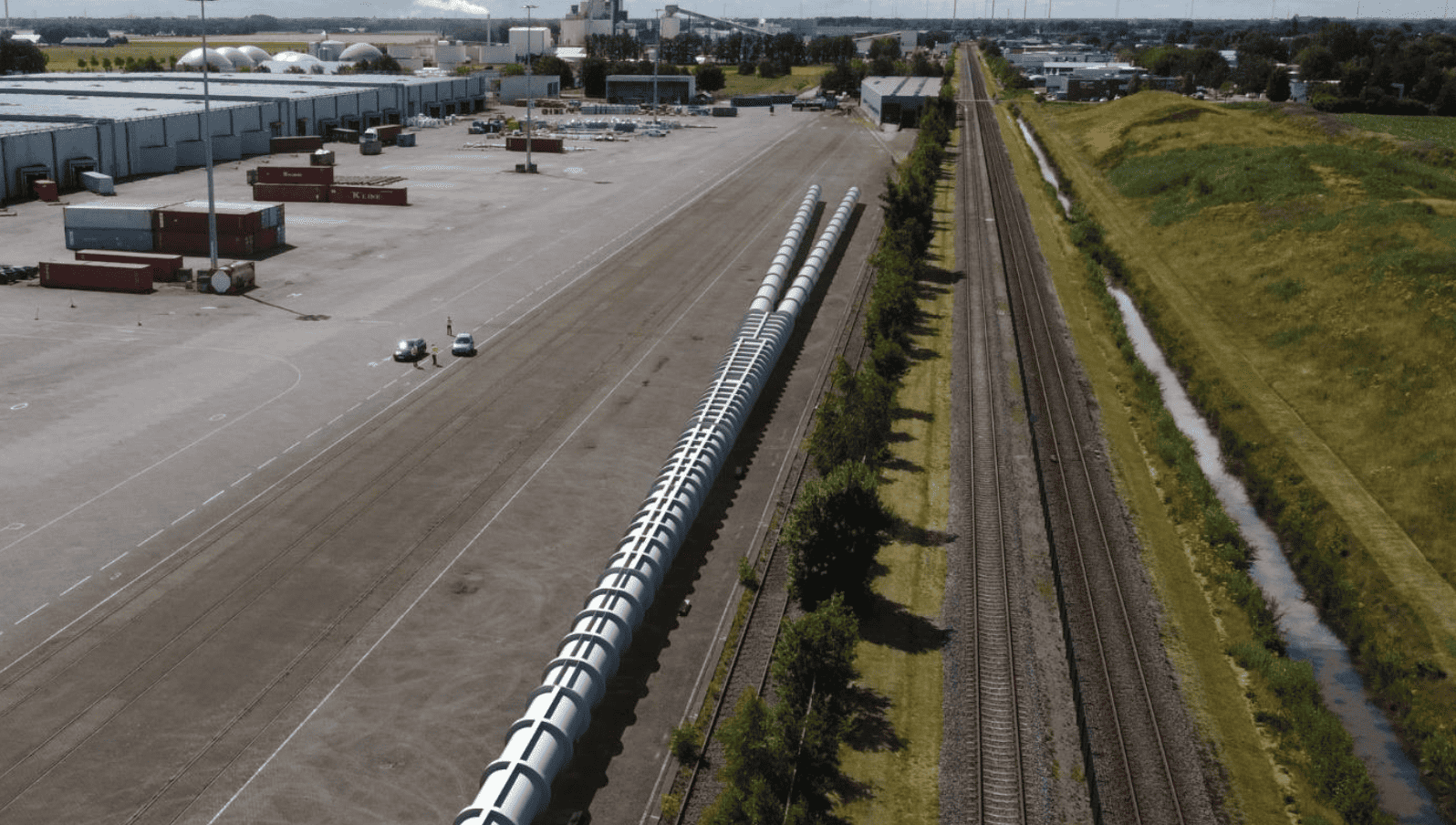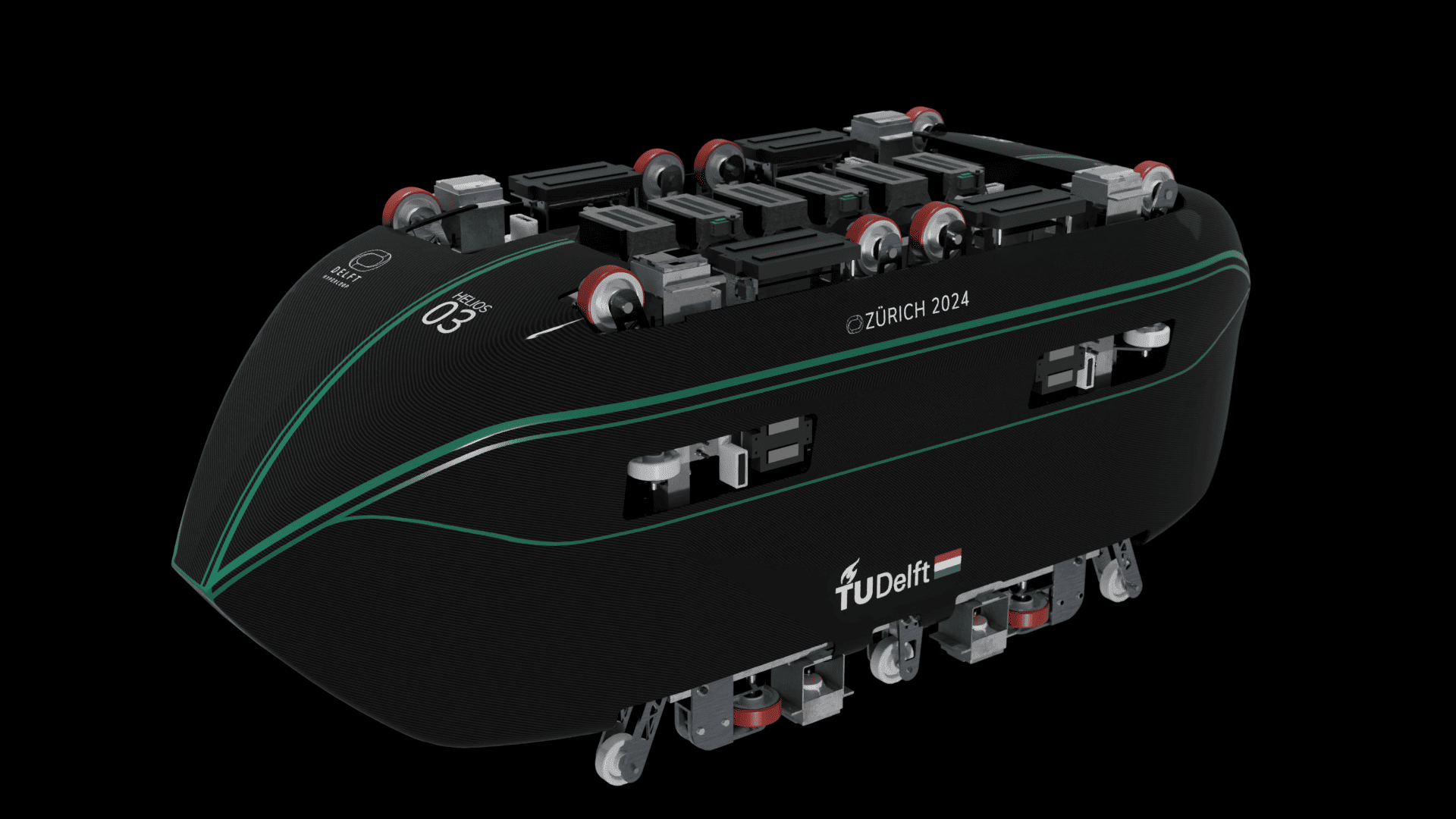
It’s the holiday season and especially at this time a year, there is probaby hardly any driver who does not dream of a way to get faster to where he wants to get, while he is sweating in long traffic jams. With the Hyperloop, this dream may well become reality in the not too distant future.
The Hyperloop is a transport system concept of a train traveling almost at the speed of sound in a tube with a partial vacuum. On July 22, a group of students from the Technical University of Munich won the Hyperloop Pod competition in Los Angeles for the third time in a row. The Germans have prevailed against student teams from all over the world and have also set a new speed record. We spoke with them after their return to Munich.
The pod of the WARR (Wissenschaftliche Arbeitsgemeinschaft für Raketentechnik und Raumfahrt) Hyperloop team raced with an incredible speed of 467 km/h through the test tube at the SpaceX company site. In the second competition, in 2017, the team’s capsule reached “only” 324 kilometers per hour. In 2018, the team was able to increase the speed by almost 50 percent. By the way, Delft Hyperloop’s capsule came in second with 142 km/h, EPFLoop was third with 85 km/h.
Countless hours of development
 “Winning such a competition is, of course, a great pleasure”, says team leader Gabriele Semino. “The team put countless hours into the development of our capsule over the past year and you are of course incredibly happy if what you have built not only works and can ride in the tube, but is also even faster than the other pods in the competition.”
“Winning such a competition is, of course, a great pleasure”, says team leader Gabriele Semino. “The team put countless hours into the development of our capsule over the past year and you are of course incredibly happy if what you have built not only works and can ride in the tube, but is also even faster than the other pods in the competition.”
The hoped-for 600 km/h could not (yet) be reached and Elon Musks goal of a speed of 1,200 km/h is probably still out of reach for a while. “This target cannot be achieved on the test track. The tube outside the SpaceX building in Los Angeles is only 1.2 kilometers long”, says Semino. “At this distance, the pod must accelerate to full speed and decelerate again.” That alone is a huge challenge.
Other than last year, when participants were allowed to use SpaceX technology, all pods had to have their own drive in 2018. Since the capsule of the WARR team already had its own engine in 2017, Semino and his team were naturally one step ahead of their competition. “This meant we were able to further develop our concept in principle. But we’ve still thoroughly revised and optimized the design as well as the drive”, he says.
The development and construction time for the new pod was only ten months. “We were lucky to have been successful with our second capsule at last year’s competition and have therefore been busy building a highly optimized version over the past year. Therefore, the new capsule is similar to the old one in many ways. For example, both are powered by electric engines and “consist largely of lightweight materials such as CFRP and aluminum, but the new design is significantly better”, emphasizes the team leader. “For example, the new capsule has five times the power density (power per weight), which enabled us to achieve higher speeds in the test tube.”
Last year’s 50-kilowatt electric motor was also replaced by eight small motors, each driving a wheel. “This increased the power performance to 240 kilowatts, or 320 horsepower. At under two meters in length, the new pod is shorter than its predecessor and has an aerodynamically optimized shape. ”
With this length – and a height of just under 30 centimeters – the pod is of course far too small for transporting passengers. Therefore, it may be some time before there will be a pod big enough to actually carry passengers. “There are several companies and research institutes working on this, but the development will take several more years. But the construction of the necessary infrastructure will probably take even much longer than this development, which is why I think it will take at least 10 years before a Hyperloop capsule can be used”, Semino suspects. At present, the technology is still in the development stages and the prototypes are initially being built with the aim of testing technologies.
“Our capsule accelerates five times faster than an airplane during take-off. These are forces that you wouldn’t want to have with passengers on board.”
As far as passenger transport is concerned, in addition to the construction of the necessary underground tubes, another problem also needs to be solved: The G-forces that would affect people while riding on the Hyperloop. “Our capsule accelerates five times faster than an airplane during take-off. These are forces that you wouldn’t want to have with passengers on board. High acceleration is unfavourable for people, which is why such acceleration must be avoided. In the test tube, our prototypes achieve over 1 g in acceleration, but this is not suitable for a passenger capsule. In comparison, an aircraft has an acceleration of 0.3-0.4 g during take-off, so a Hyperloop capsule probably shouldn’t accelerate faster than that either.”
SpaceX founder Elon Musk initiated the “Hyperloop Pod Competition” in 2016 in order to get closer to his vision: Letting people travel at approximately the speed of sound in the super fast Hyperloop train in the future.
WARR Hyperloop is a project of the student initiative WARR (Wissenschaftliche Arbeitsgemeinschaft für Raketentechnik und Raumfahrt), which has been active in the field of aerospace at the Technical University of Munich since 1962. The project is also supported by the Bavarian state government and Prime Minister Markus Söder announced in his government declaration that he would build a Bavarian test track for the Hyperloop.
Photo: WARR Hyperloop
Also read: Carlo van de Weijer on high speed traveling:
“Knowing that one of the fundamental problems of rail is that it is too inflexible to adapt to a future that just requires increasing flexibility, the Hyperloop is a very interesting and challenging step in the completely wrong direction. Let alone all the technical barriers…”







